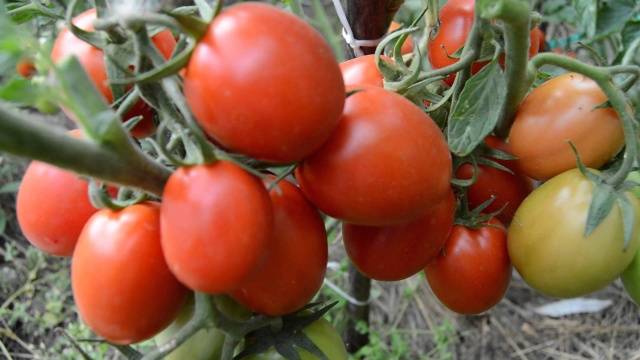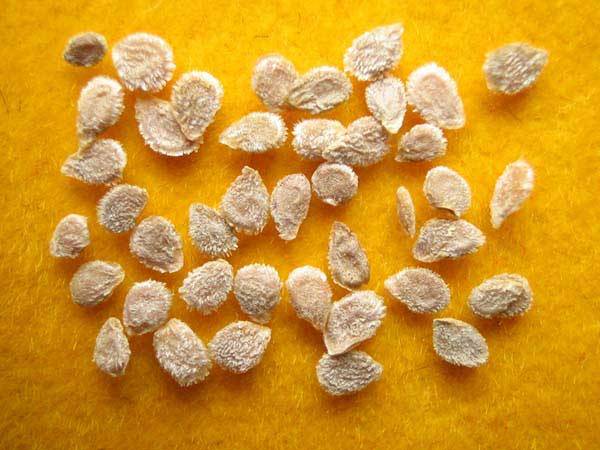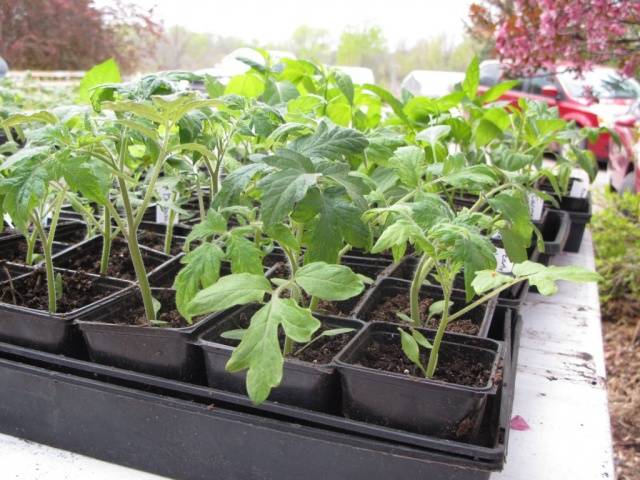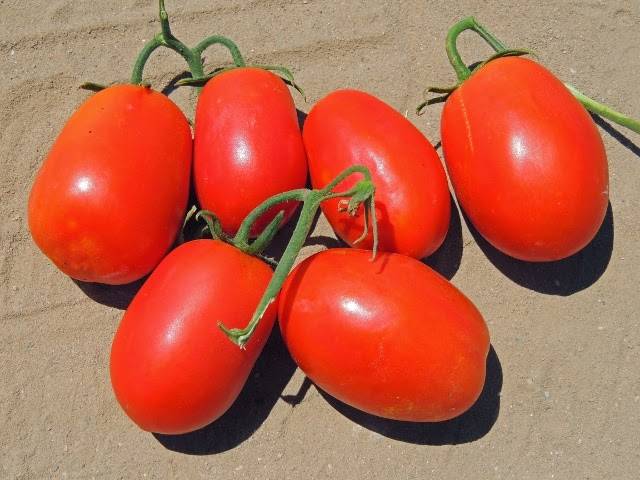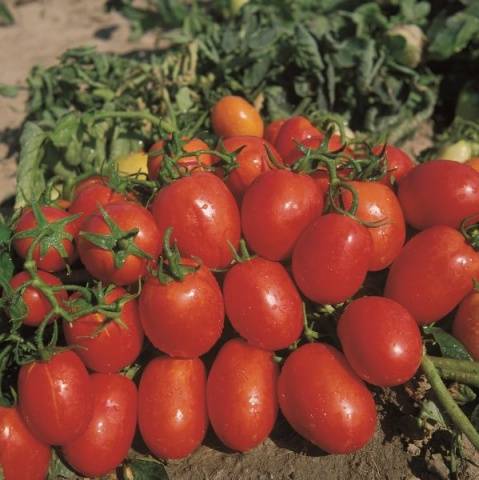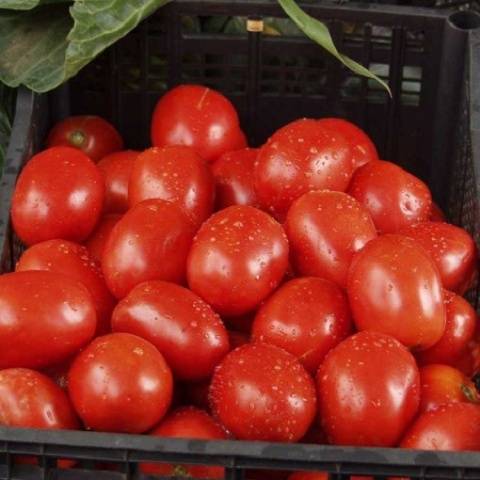Content
The Rio Grande tomato is a determinant variety with a classic flavor. It is grown in seedlings or directly in the open field. Although the variety is considered one of the most unpretentious, proper watering and fertilization will increase its yield.
Description of the variety
Rio Grande is a well-deserved variety that has become widespread in garden plots. It was bred by Dutch breeders for indoor and outdoor cultivation.
The characteristics and description of the Rio Grande tomato variety are as follows:
- a small number of leaves;
- the height of an adult plant is 60-70 cm;
- there is no need for tying and pinching;
- up to 10 ovaries are formed on the shoot;
- fruit ripening period - 110-120 days;
- the harvest is harvested from June to September.
The fruits of the variety correspond to the following characteristics:
- weight from 100 to 150 g;
- fleshy, aromatic, with little seeds;
- elongated oval shape;
- pronounced red color;
- dense pulp;
- sweetish taste with a slight sourness;
- dense skin that does not allow the fruit to crack;
- increased dry matter content;
- fruits are harvested green and left to ripen at home.
In general, the bush is compact, so it does not need to be tied up. The variety is grown for sale or for personal use. Smooth fruits are suitable for homemade preparations: pickling, canning, salting.
Tomatoes are also used in salads, soups, stews and sauces. Tomatoes produce a thick and bright red juice.
Landing order
Tomatoes are grown from seeds. In cold regions, it is recommended to first get seedlings, and then start planting tomatoes in a permanent place in a greenhouse or greenhouse. In hot climates, you can plant seeds directly into the soil.
Getting seedlings
The Rio Grande tomato is grown in seedlings. The seeds must be planted in March. The soil for plants should be loose and light. It is prepared from a mixture of humus and turf.
Such treatment will get rid of pest larvae and disease spores. The soil is poured into small containers or plastic cups. The seeds themselves do not need to be treated with stimulants.
Rio Grande tomato seeds are buried in the ground, a layer of peat is poured on top. Cover the top of the container with foil. Seed germination occurs at a temperature of 25 degrees. Seedlings do not need constant watering, it is enough to periodically spray them with warm water.
After emergence, the containers are placed in the sun. In case of insufficient natural light, additional lighting is equipped.
When the first leaves appear, the plants are distributed in separate containers. Then the tomatoes are watered with a complex mineral fertilizer.
Growing in a greenhouse
The resulting seedlings are planted in a greenhouse or greenhouse. No more than 4 bushes are located on one square meter.
Tomatoes are planted in loamy soil, which has good air permeability. The beds are formed two weeks before planting.
In the beds, holes are made, at the bottom of which humus or mineral fertilizer is placed.About 30 cm is left between the holes, and up to 70 cm between the rows with tomatoes.
The seedlings are placed in recesses, the roots are straightened and covered with earth. At the end of the process, the tomatoes are watered abundantly.
Landing in open ground
In the southern regions, the Rio Grande variety is planted in open ground. The variety can be grown in a seedless way.
Then prepare the beds located on the sunny side of the site. In April, the soil needs to be dug up and humus added. Wood sides are installed along the edges of the beds.
Then the surface of the soil is leveled and several holes are made at a distance of 0.4 m from each other. The soil is covered with a garden film.
Soil temperature should be up to 12 degrees. 3-5 seeds are placed in each well, after germination they are thinned out and the strongest shoots are selected.
After planting, watering is required. Small frosts will not lead to the death of seeds, since they are under the soil and covering material.
Care features
Proper care of tomatoes is a guarantee of a good harvest. Tomatoes are regularly watered, fertilized and treated against pests. The Rio Grande variety does not require pinching, which greatly simplifies the procedure for caring for it.
Watering tomatoes
Rio Grande tomatoes require moderate watering. A lack of moisture will lead to the death of plants, and its excess provokes rotting of the root system and the spread of diseases.
In the greenhouse, tomatoes are watered once or twice a week. The soil should remain 90% moistened and the air 50%. Up to 5 liters of water is applied under each bush.
Excessive sunlight when moisture enters the leaves can cause plant burns. Water for irrigation should be warm, with a temperature of 23 degrees or more. According to reviews on the Rio Grande tomato, the plant is able to cope with drought, however, watering rules should be followed.
Tomatoes are watered in compliance with the following deadlines:
- The first watering is done immediately after placing the seedlings in the ground.
- The next procedure is performed after 10 days. During the growing season, tomatoes are watered twice a week. Each bush needs 3 liters of water.
- During the flowering period, watering is performed once a week, and the volume of water is 5 liters.
- When fruits appear, moisture must be applied twice a week, but its volume must be reduced.
- When the tomatoes start to turn red, watering the plants once a week is enough.
Fertilization
For active development, Rio Grande tomatoes require feeding, which is carried out in several stages:
- 14 days after transferring to a permanent place.
- 2 weeks after the first feeding.
- When buds are formed.
- During fruiting.
Mineral fertilizers are used at all stages of tomato growth. Feeding with phosphorus and potassium stimulates the development of plants and improves the taste of the fruit. Mineral components can be replaced with wood ash.
Before the ovary appears, tomatoes are sprayed with urea infusion (1 tbsp. L. Per 10 l of water). After the formation of the fruit, the plants can be treated with potassium sulfate or nitrate (1 tablespoon fertilizer per bucket of water).
Protection against diseases and pests
The Rio Grande variety is resistant to most tomato diseases: late blight, white and gray rot, mosaic.
To prevent diseases, the soil in the greenhouse should be renewed annually. Before planting, the soil is treated with a solution of copper sulfate or potassium permanganate.
In the open field, tomatoes are planted in the garden where cabbage, greens, and legumes were previously grown. Tomatoes are not planted after peppers and eggplants.
In rare cases, slugs and aphids may appear on plants. You can eliminate pests with the help of insecticides or folk remedies. Spraying with ammonia solution allows you to get rid of slugs.A soap solution is effective against aphids.
Compliance with agricultural practices will help to avoid the spread of pests and diseases:
- mulching the soil with humus or straw;
- regular ventilation of the greenhouse;
- moderate watering;
- prevention of plant thickening.
Gardeners reviews
Conclusion
According to its characteristics and description, the Rio Grande tomato variety is suitable for further canning. Firm, medium-sized fruits tolerate processing well and have excellent taste. Rio Grande is considered an unpretentious variety that can withstand hot weather. With regular watering and fertilization, high yields of this variety are obtained.
